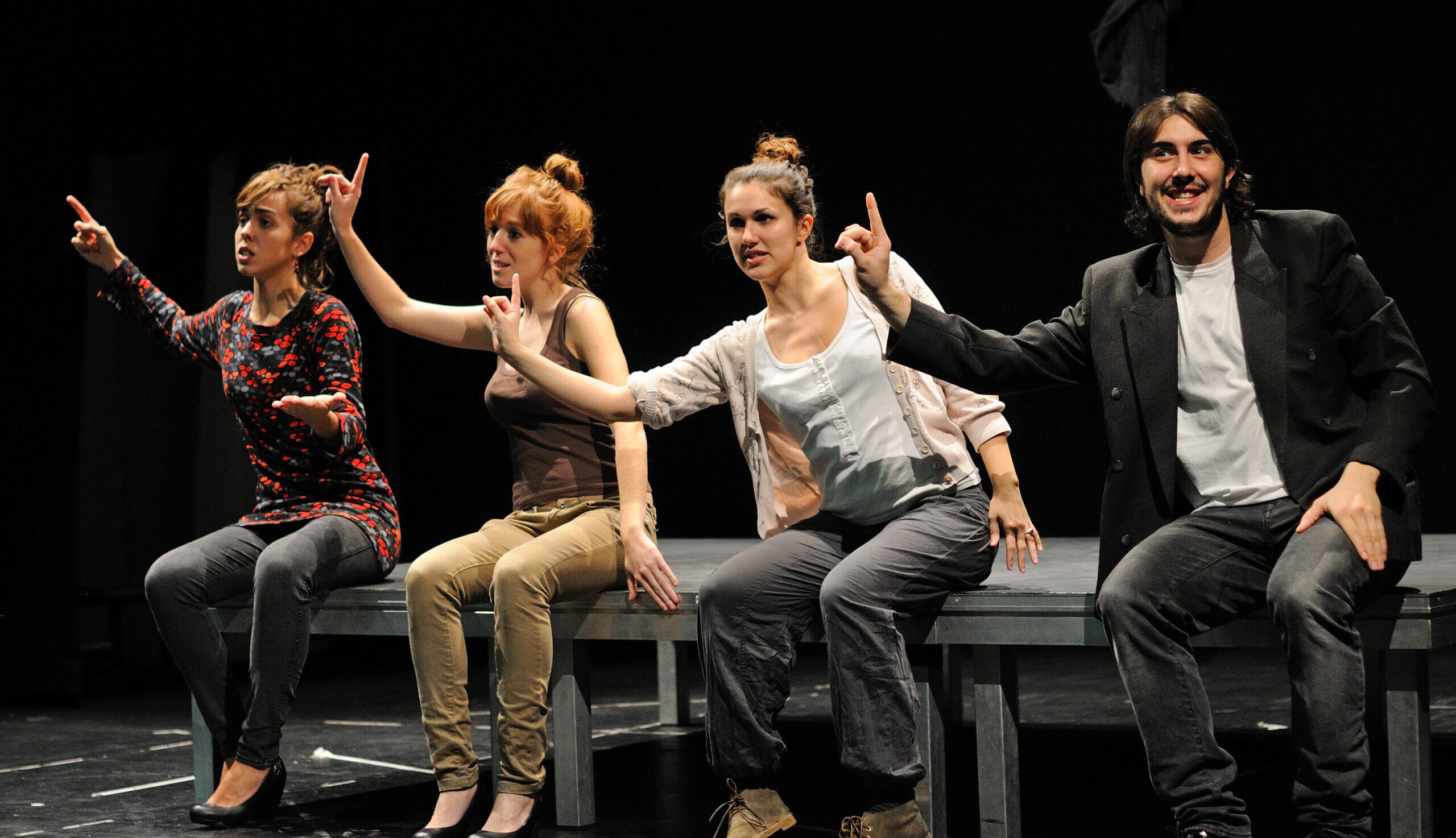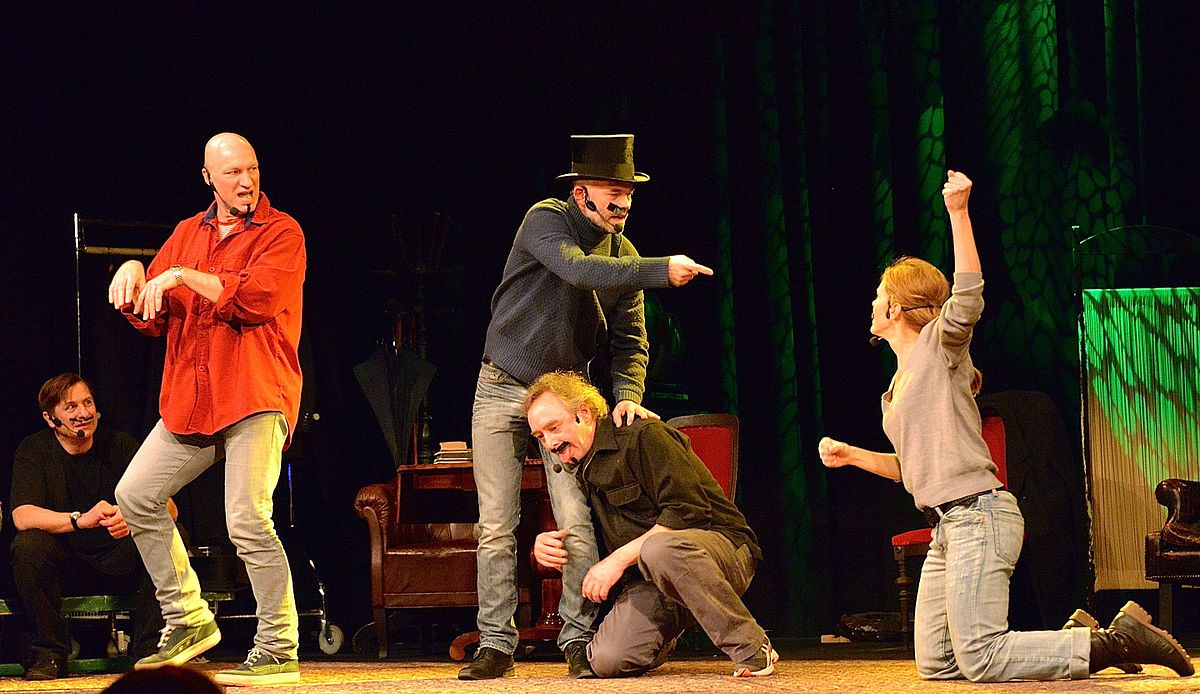Improvisation, often referred to as improv, is one of the most dynamic, creative, and spontaneous forms of performance art found in drama. Unlike traditional scripted performances where every line and action is pre-planned, improv allows actors to develop scenes, characters, and dialogue entirely on the spot. This unpredictable nature of improv brings a fresh, unscripted experience to every performance, making it both a challenge and a joy for actors and audiences alike.
At its core, improv in drama is the art of unscripted performance. Actors use their creativity, imagination, and quick thinking to craft a scene with no prior preparation. In these scenarios, actors must respond in real-time to their fellow performers, creating a unique performance that cannot be replicated. While improv is often associated with comedy due to its presence in many comedic performances, it is equally powerful in dramatic settings, bringing authenticity and raw emotion to the stage.
The rise of improvisation in recent decades, with shows like Whose Line Is It Anyway? and its use in corporate settings for team-building, has made improv a widely recognized and celebrated art form. But what makes improv so special in drama?

The Basics of Improvisation in Drama
Improvisation may seem like chaos at first glance, but it actually follows specific principles and practices that guide actors. These foundations allow improv to thrive while maintaining a sense of structure, even when there is no script.
Defining Improvisation in Drama
Improvisation in drama is about spontaneity, creativity, and adaptability. It involves unscripted performances where actors create their dialogue, actions, and interactions in real-time. Since there is no script to rely on, improvisers must use their imagination to build a scene based on the given circumstances, often referred to as “prompts” or “suggestions.” These prompts can come from the audience, a director, or even other actors on stage.
Key elements of improvisation:
- No pre-written script: Actors develop scenes based on the present moment.
- Collaborative effort: Improv heavily relies on actors’ interactions with each other.
- Creativity under pressure: Actors need to think quickly and create realistic dialogue, characters, and storylines.
How Does Improv Work in Drama?
Improv works by encouraging actors to embrace the unknown and be fully present in the moment. Since there is no pre-determined outcome, actors must listen attentively and respond authentically to what their fellow performers say or do.
The key to successful improvisation lies in the concept of acceptance—often referred to as the “Yes, and…” rule. This means that when one actor introduces an idea, the other actor must accept it and then build upon it. This keeps the momentum going and allows the scene to develop naturally. For example, if one actor says, “Look out! A dragon is coming!” the other actor should accept the idea of a dragon and expand the scene, rather than denying it.
What Are the Main Rules of Improv?
Though improvisation is unscripted, there are certain guidelines that actors follow to ensure scenes are cohesive and enjoyable. These rules help keep the performance focused and prevent actors from shutting down each other’s ideas.
Key Rules of Improv:
- Yes, and…: Accept what your partner gives you and add to it.
- Stay in the moment: Focus on the present action without overthinking.
- Support your fellow actors: Improv is a team effort; help others succeed.
- Avoid blocking: Blocking refers to rejecting ideas, which stops the scene from progressing.
- Be spontaneous: Embrace creativity without second-guessing.
These rules foster collaboration and help actors create a performance that feels natural, even without a script. The unpredictability and flexibility that come with improv give it a unique energy that captivates audiences, as the outcome is never set in stone.

Improvisation thrives on a few key elements that allow it to function smoothly and keep the performance engaging. These elements ensure that improv remains structured despite its spontaneous nature, helping actors maintain a seamless flow in their unscripted performances.
Flexibility and Adaptability
One of the most essential components of improv is flexibility. Since actors are performing without a script, they need to be adaptable to changes in the scene or to unexpected actions from their fellow actors. Flexibility means being open to shifting the story, the tone, or even the character you are portraying if the scene demands it.
For instance, in a scenario where a performer unexpectedly introduces a new character or plot twist, the rest of the actors need to adapt to this development immediately. Failure to adapt can lead to awkward silences or scenes that feel disconnected. Therefore, flexibility is a hallmark of a skilled improviser.
Examples of adaptability in improv:
- Adjusting to changes in location or setting on the fly (e.g., shifting from a beach to a spaceship mid-scene).
- Modifying character traits or motivations based on the direction of the scene.
- Accepting and rolling with interruptions or unexpected audience suggestions.
Spontaneity and Creativity
Spontaneity is at the heart of every great improv performance. Actors must be willing to think quickly, generating new ideas and reactions instantly. This spontaneity fuels the creativity that drives improv scenes. Often, the most memorable moments in improvisational performances are those that feel fresh, unexpected, and raw, leaving the audience surprised and entertained.
For actors, this means learning how to let go of preconceived notions and trust their instincts. Improv exercises and games are often used to develop spontaneity, encouraging performers to stop overanalyzing and simply react to what’s happening around them.
Ways to boost spontaneity in improv:
- Engaging in fast-paced games like Zip Zap Zop to encourage rapid responses.
- Practicing word-association games to train the mind to react without hesitation.
- Using prompts or random objects to inspire creative thinking on the spot.
Collaboration in Improv
Improv is a team effort, requiring strong collaboration between actors. A successful scene depends on how well actors listen and respond to each other. Improv actors are trained to work together to build the scene, sharing the spotlight and helping one another when needed. The ability to communicate non-verbally, understand scene dynamics, and elevate your fellow performers is critical to ensuring a cohesive and entertaining performance.
In collaborative improv, there’s a shared understanding that the success of the scene depends on everyone’s contribution. Unlike in scripted drama, where lines are predetermined, improv actors constantly interact and adjust to their partners’ performances, enhancing the group dynamic.
Examples of collaboration in improv:
- When an actor stumbles or pauses, another performer might step in to support the scene without overtaking it.
- Actors often feed off each other’s energy, with one performer raising the stakes of a scene, prompting others to follow suit.
- A smooth handoff between actors is key; when one performer leads, others must support, and vice versa.
Comedy in Improv
While improv is not always comedic, comedy plays a central role in many improvisational performances, especially in popular culture. Shows like Whose Line Is It Anyway? have popularized improv as a comedic art form, using quick wit, wordplay, and physical comedy to engage the audience.
In comedic improv, timing is crucial. Actors must seize opportunities for humor as they arise, whether through clever lines, unexpected twists, or exaggerated physicality. However, not all improv comedy is about being overtly funny; subtle humor, irony, and misunderstandings can also elicit laughter.
Tips for creating comedy in improv:
- Play with unexpected juxtapositions or absurd scenarios (e.g., a detective solving a mystery at a wedding).
- Embrace awkward pauses or misunderstandings for comedic effect.
- Use physical comedy, exaggerated facial expressions, or body movements to add humor without dialogue.
Improv is powered by these key elements, each one contributing to the spontaneous and unpredictable nature of the performance. The combination of flexibility, creativity, collaboration, and humor is what makes improvisation in drama such a unique and thrilling experience.

Improvisation in drama is not a one-size-fits-all approach. Over the years, different forms of improv have emerged, each offering its own unique flavor and set of challenges. From short, fast-paced scenes to longer, more intricate performances, these variations in improv allow actors to experiment with different styles, skills, and audience interactions.
Short-form Improv
Short-form improv involves quick, structured games or scenes, often lasting only a few minutes. These short bursts of creativity are typically highly energetic and comedic, relying on rapid-fire responses from the actors. Because of their fast pace, short-form improv scenes are usually less focused on deep character or plot development and more on the immediate interaction and humor between performers.
Short-form improv has become widely recognized, thanks in part to TV shows like Whose Line Is It Anyway?. In these performances, actors are given quick prompts or challenges, such as acting out a scene in a specific style or genre (e.g., Western, horror, or musical). The rules are often simple, and the focus is on generating quick laughs and engaging the audience with clever, witty performances.
Examples of short-form improv games:
- Scenes from a Hat: Actors draw random scene prompts from a hat and must act them out immediately.
- Party Quirks: One actor plays the host, while other performers arrive at a party with strange quirks or identities that the host must guess.
- World’s Worst: Actors take turns acting out the “world’s worst” version of a particular profession or situation, leading to exaggerated and often hilarious performances.
Long-form Improv
In contrast to short-form, long-form improv involves more extended, often more complex performances. These can last anywhere from 10 minutes to an hour or more, allowing actors to explore deeper character development and storylines. Long-form improv often starts with a single suggestion from the audience, which is used as the seed for an entire narrative.
One of the most famous long-form improv formats is the Harold, developed by improvisation pioneer Del Close. The Harold begins with a simple suggestion, which the actors then use to create interconnected scenes that develop over time. The beauty of long-form improv is its potential for layering—scenes may return later in the performance, or characters might evolve and grow as the story unfolds, creating a richer, more nuanced performance than short-form improv typically allows.
Characteristics of long-form improv:
- Character development: More time allows for the creation of multi-dimensional characters who have clear motivations and personalities.
- Story arcs: Scenes are often interrelated, leading to a more cohesive narrative across the performance.
- Subtle humor and emotion: Long-form improv has the space to explore both comedic and dramatic moments, making it versatile.
Musical Improv
Musical improv adds an exciting layer of complexity by integrating music and spontaneous song creation into the performance. In musical improv, actors create original songs on the spot, often with live musicians or prerecorded backing tracks. The challenge lies in the performers’ ability to improvise lyrics, melodies, and harmonies while maintaining the flow of the scene.
Musical improv is typically used in comedic settings, but it can also be applied in dramatic contexts. The unexpected nature of breaking into song can add an element of surprise and delight, whether the mood is lighthearted or serious.
Techniques used in musical improv:
- Rhyming and rhythm: Improvised lyrics need to match the music in both rhythm and rhyme, making timing critical.
- Song structure: Performers often follow familiar structures (e.g., verse-chorus-bridge) to create songs that feel complete.
- Musical genres: Actors may be tasked with improvising in specific musical styles, such as jazz, opera, or hip-hop, adding an extra challenge.
Case Study: In popular improv groups like Baby Wants Candy, entire musicals are created on the spot, with audience members providing a title or theme at the start of the show. From there, the actors and musicians work together to build an hour-long performance complete with original songs, characters, and plotlines—all improvised in real-time.
Each type of improv, whether short-form, long-form, or musical, presents its own unique challenges and opportunities for creativity. These variations allow actors to explore different aspects of improvisation, from quick-witted comedy to more in-depth storytelling and musical expression.